Losing weight can be a challenging endeavor, especially when the goal is to shed pounds rapidly. Yet, by making substantial changes to your diet and exercise routine, it’s feasible to witness a significant decrease in body fat in just one week. Here’s how to lose weight in a week, with details on implementing effective strategies for quick weight loss.
1. Is Rapid Weight Loss in a Week Safe?
Losing weight very fast, which means dropping more than 1–2 pounds per week, usually isn’t safe for most people. Doing this can cause several health problems like losing muscle, a slower metabolism, not getting enough nutrients, developing gallstones, and the chance of gaining the weight back later. It’s common to lose a bit more than 2 pounds in the first week when you start a new workout or diet, but it’s hard to keep losing weight at this speed over the long term.
Diets that make you lose weight quickly, such as diets with very few calories, are often watched over by doctors. These are usually for people who are very overweight and need to lose a lot of weight fast. However, these diets aren’t meant to be followed for a long time and aren’t good for everyone.
For most people, it’s better and safer to lose weight slowly, at a rate of about 1/2 pound to 1 pound per week. Losing weight this way is easier to keep up over time, leading to long-term success and healthier living habits.
Notes: Even though it’s tempting to want to lose weight quickly, it’s important to go slow and steady to stay healthy. Quick solutions might seem nice at first, but they can lead to health problems and usually don’t work for keeping the weight off in the long run. Eating well and exercising regularly, in ways that fit your lifestyle and likes, are key to losing weight and keeping it off. Always talk to a doctor before starting any diet, especially if it cuts your calories a lot or changes what you eat dramatically.

2. Principles of how to Lose Weight in a Week
When aiming to shed pounds within a week, it’s important to proceed with caution, as quick weight loss can bring about health concerns. The safest and most recommended pace for losing weight is roughly 0.5 to 1 pounds (0.27 to 0.45 kilograms) each week. To reach this goal in a wholesome manner, consider making minor, manageable adjustments to your diet and exercise routines. This involves setting SMART (Specific, Measurable, Achievable, Relevant, Time-bound) objectives. It’s also crucial to calculate the number of calories you should eat to lose fat, eat enough protein, focus on strength training exercises, and remember that you can’t simply exercise away poor eating habits. Fast weight reduction is typically unsafe for the majority and can result in various health issues. Hence, aiming for steady, long-term weight loss through nutritious eating and consistent exercise is the better route.

3. 10 Healthy Ways on How to Lose Weight in a Week
These ten strategies are all about creating a calorie deficit in a smart, nutritious way, making sure your body still receives the vital nutrients it requires.
3.1 Reduce Calorie Intake
To lose weight, you need to eat fewer calories than what your body uses. Doing this thoughtfully is key to ensure you’re not missing out on essential nutrients.

3.2 Divide Into Several Small Meals
Having smaller, more frequent meals can help keep your blood sugar levels stable and control hunger. This method helps prevent binge eating by keeping you feeling full all day.
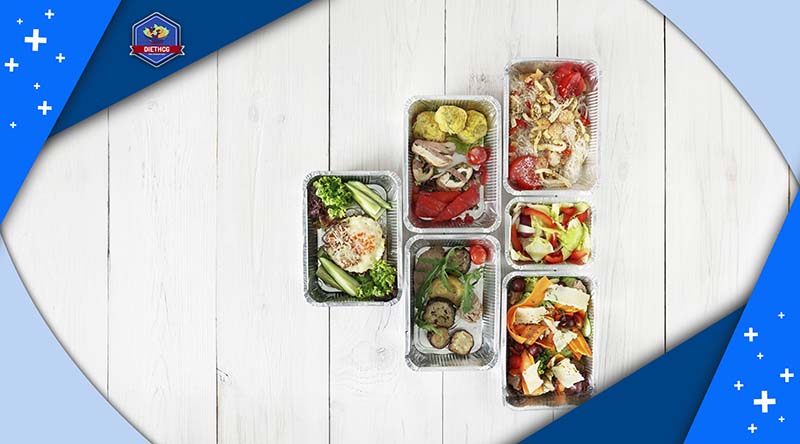
3.3 Cut Down on Carbohydrates
Lowering your intake of carbohydrates, particularly refined carbs like white bread, pasta, and sweets, can aid in weight loss. Instead, opt for complex carbs found in vegetables, whole grains, and legumes, which digest slowly and keep you feeling satisfied for longer.
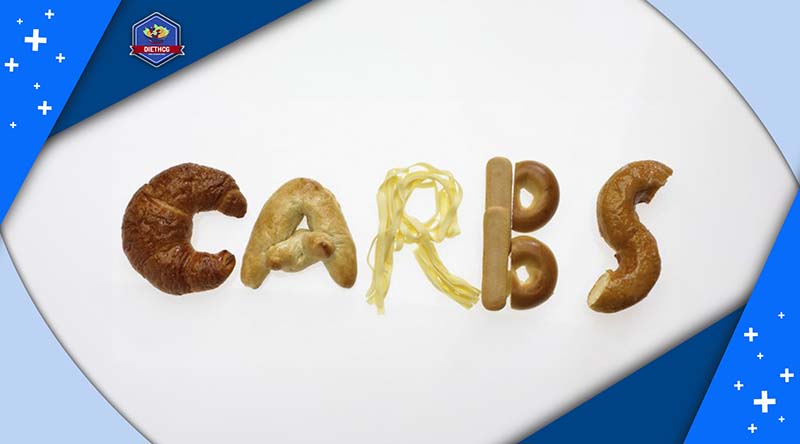
3.4 Increase Protein Intake
Protein is crucial for repairing tissues and can also help curb your appetite, leading to a lower calorie intake. Include sources of lean protein in your meals, such as chicken, fish, tofu, beans, and eggs.
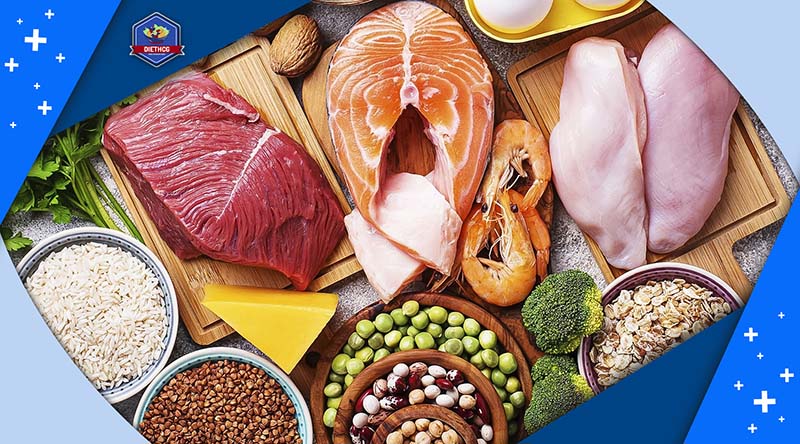
3.5 Eat More Fiber
Fiber is digested slowly, helping you feel full for longer, which supports weight loss. It can also help maintain stable blood sugar levels, promote regular bowel movements, and guard against certain diseases. Aim for 2 cups of fruit and 6 ounces of grains daily, along with plenty of vegetables and beans, which are also high in fiber.

3.6 Avoid Processed Foods
Processed foods tend to be loaded with added sugars, unhealthy fats, and excess calories, all of which contribute to weight gain. Focus on eating whole, unprocessed foods for the majority of your meals.
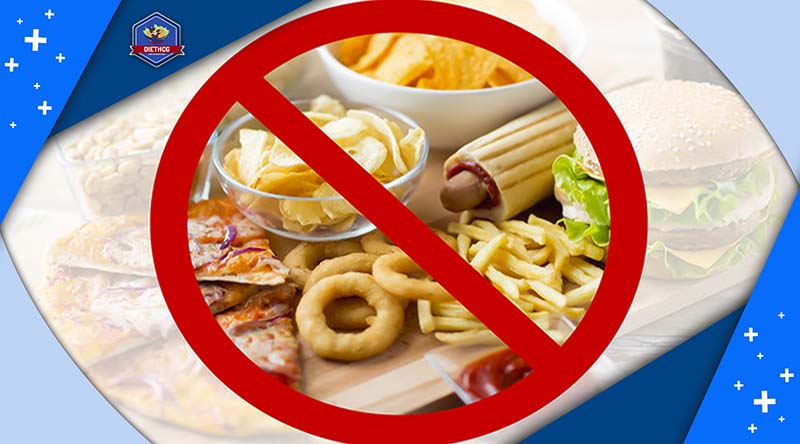
3.7 Never Skip Breakfast
A healthy breakfast kicks off your metabolism and keeps you energized for the day. Choose breakfasts that are high in fiber and protein to stay full.
3.8 Abstain From Alcohol and Alcoholic Beverages
Alcohol adds calories without any nutritional benefit and can lead to unwise eating decisions. Eliminating alcohol can drastically cut down your calorie intake.

3.9 Exercise Regularly
Make sure your exercise routine includes cardiovascular workouts, strength training, and flexibility exercises. This combination not only helps burn calories but also builds muscle mass, enhancing your metabolism.

3.10 Drink Plenty of Water
Drinking 0.5 liters (about 17 ounces) of water can temporarily boost calorie burning by 24–30% for an hour. Also, drinking water before meals can help reduce the amount of calories consumed, particularly in older adults. Water is especially effective for weight loss when it replaces calorie-rich drinks and sugary beverages.

Notes: These methods are not just about losing weight quickly; they’re about making lasting changes to your lifestyle that promote ongoing health and wellness. Always consider the long-term impact of your dietary and exercise choices, and remember, sustainable weight loss is a marathon, not a sprint.
4. Foods That Help You Lose Weight Quickly in a Week
Some foods can really kick your weight loss into high gear by boosting your metabolism, cutting down your hunger, or keeping you satisfied for a longer time. Below is a list of foods great for speeding up weight loss, but remember, losing weight the healthy way involves a balanced diet and staying active:
- Whole Eggs: Once avoided for their cholesterol content, whole eggs have regained popularity. They’re packed with protein and fats that can help keep you feeling full, which might help you eat less overall.
- Leafy Greens: Foods like spinach, kale, and Swiss chards are low in calories and carbs but high in fiber. Adding leafy greens to your meals can bulk them up without adding extra calories.
- Salmon: This fatty fish is super healthy and satisfying, filled with quality protein, good fats, and important nutrients. Seafood can also provide a good amount of iodine.
- Cruciferous Vegetables: Veggies like broccoli, cauliflower, and Brussels sprouts are fiber-rich and very filling. They also have more protein than most other vegetables, making them a solid choice for weight loss.
- Lean Meat and Chicken Breast: Despite their bad rap for being fatty, lean cuts of meat are excellent protein sources. Eating a lot of protein can increase your metabolism and help you feel more satisfied.
- Boiled Potatoes: They might have lost some popularity, but white potatoes are nutritious and filling. They’re a good source of potassium, which is essential for blood pressure management.
- Beans and Legumes: Foods like lentils, black beans, and kidney beans can be great for losing weight. They’re packed with protein and fiber, which can help you feel full.
- Soups: Eating foods with low energy density, meaning they have fewer calories for their weight, can lead to eating fewer calories. Adding water to make a soup is one way to achieve this.
- Cottage Cheese: Dairy products are often high in protein, and cottage cheese is no exception. It’s mainly protein with very few carbs and not much fat.
- Avocados: Unlike most fruits, avocados are rich in healthy fats, especially monounsaturated oleic acid, the same fat found in olive oil. They also contain lots of water and fiber, making them less calorie-dense.
- Nuts: Even though they’re fat-rich, nuts aren’t as fattening as you might think. They’re a great snack, offering a mix of protein, fiber, and healthy fats.
- Whole Grains: Some whole grains, like oats, brown rice, and quinoa, are beneficial and filling. They’re full of fiber, which can help with weight management.
- Chili Peppers: Adding chili peppers to your diet might help with weight loss. They contain capsaicin, which has been shown to reduce appetite and increase fat burning in some research.
- Fruit: Fruits do contain sugar, but they’re also high in fiber, which helps slow down sugar absorption into your bloodstream. Choosing fruit over higher-calorie snacks can be a good strategy for weight loss.
Notes: While these foods can aid in weight loss, balance and moderation are key. Incorporating these into a healthy, balanced diet along with regular physical activity is the most effective way to lose weight and keep it off. Remember, there are no magic foods for weight loss, but choosing healthier options can make a big difference in your journey.
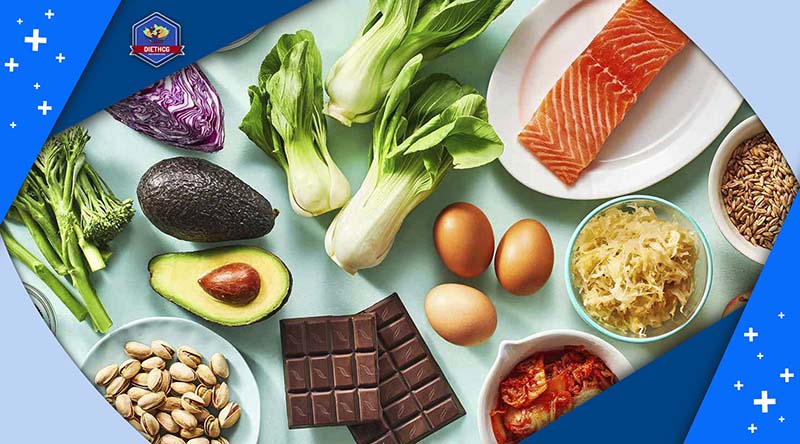
5. Suggested Diet Plan on How to Lose Weight in a Week
Creating a meal plan for weight loss in a week should center on reducing calorie consumption, adding nutrient-rich foods, and adopting a balanced approach to eating. While quick weight loss can feel rewarding, it’s vital to choose strategies that are sustainable and healthful over the long haul. Here’s a diet plan that marries healthy eating principles with the aim of shedding weight:
5.1 Day 1
- Breakfast: Mix 3/4 cup bran flakes, 1 banana, and 1 cup fat-free milk.
- Lunch: Assemble a pita with 1 mini whole wheat pita, 3 ounces turkey breast, 1/2 roasted pepper, a teaspoon of mayo, mustard, and lettuce. Accompany with 1 part-skim mozzarella string cheese stick and 2 kiwis.
- Dinner: Have 4 ounces of broiled flounder or sole with 2 sliced plum tomatoes topped with 2 tablespoons grated Parmesan cheese, broiled until golden. Serve with 1 cup couscous and 1 cup steamed broccoli. Enjoy a single-serve ice cream for dessert.
5.2 Day 2
- Breakfast: Make a smoothie with 1 cup frozen berries, 1/2 banana, and 8 ounces of low- or fat-free milk. Take 1 or 2 hard-boiled eggs for the road.
- Lunch: Warm up 1 cup vegetable soup. Eat with 1 veggie burger on a whole grain and seed toast slice or an English muffin. Add 1 cup fresh grapes.
- Dinner: Grill 4 ounces boneless, skinless chicken breast with barbecue sauce. Top chicken with chopped scallions and lime juice. Serve with 2 cups sautéed spinach with garlic, olive oil, tomatoes, and 1/2 baked plain or sweet potato.
5.3 Day 3
- Breakfast: Cook 1/2 cup quick oats with low-fat or unsweetened soy milk. Add 1/2 sliced or chopped apple, 1 teaspoon honey, and cinnamon.
- Lunch: Make a chicken salad with 4 ounces shredded roast chicken breast, 1/4 cup sliced red grapes, 1 tablespoon almonds or nuts, 1/4 cup chopped celery, 1 tablespoon mayonnaise, and 1 tablespoon plain Greek yogurt. Serve over lettuce with 1 large piece of multigrain toast.
- Dinner: Have 4 ounces steamed shrimp with 1 baked potato topped with 3 tablespoons salsa and 1 tablespoon Greek yogurt, plus 3 cups steamed spinach. End with 1 ounce of chocolate or a 100- to 150-calorie ice cream bar.
5.4 Day 4
- Breakfast: Enjoy 1 cup plain or low-sugar Greek yogurt with 1 cup berries and 1/3 cup low-sugar granola.
- Lunch: Serve 1 cup tomato soup with a roast beef sandwich made from 1 mini whole-wheat pita, 3 ounces roast beef, 1 teaspoon horseradish, mustard, tomato slices, and lettuce. Have with 2 cups raw veggies and 1/4 cup hummus.
- Dinner: Serve 4 ounces poached salmon with a slaw made from 1 1/4 cups coleslaw mix and 2 scallions tossed with 1 tablespoon rice vinegar and 1 1/2 teaspoons olive oil. Serve with 1 cup whole grain like quinoa.
5.5 Day 5
- Breakfast: Mix 1 cup Cheerios, 1/2 cup berries, 1 tablespoon almonds, and 6 ounces plain Greek yogurt.
- Lunch: Make a quesadilla with 1/4 cup fat-free refried beans on a 100% stone-ground corn tortilla. Add 1 ounce shredded cheese and top with another tortilla. Microwave or grill for 45 seconds. Serve with cucumber spears and 1/2 cup 2% cottage cheese or Greek yogurt with 2 clementines.
- Dinner: Have 3 ounces roasted pork tenderloin with 1 cup baked acorn squash mashed with cinnamon; 2 to 3 cups salad greens with olive oil and vinegar; and a chocolate or 100- to 150-calorie ice cream bar for dessert.
5.6 Day 6
- Breakfast: Spread 2 tablespoons nut butter on a toasted 100% whole-grain waffle. Top with 1 small sliced banana and sprinkle with cinnamon and nutmeg. Serve with 8 ounces fat-free milk.
- Lunch: Make a tuna pita with 1 mini whole-wheat pita, 2 ounces water-packed tuna, 1 tablespoon mayonnaise, mustard, cucumber, and onion slices. Accompany with 10 baby carrots and 2/3 cup plain Greek yogurt with a small pear.
- Dinner: Create jambalaya with 3/4 cup cooked brown rice, 1/2 cup corn, 2 ounces turkey sausage, 1/3 cup salsa, and 1/4 cup black or navy beans. Serve with 3 cups spinach sautéed with garlic in 1 tablespoon olive oil.
5.7 Day 7
- Breakfast: Stack 1/2 toasted English muffin with 1 ounce reduced-fat cheese, 1 sliced tomato, 1 cup steamed spinach, and 1 poached egg. Serve with a grapefruit.
- Lunch: Toss 1/2 cup black beans, 1/2 cup orange slices, chopped red bell peppers, red onion, scallions, and veggies of choice with 1 teaspoon vinegar. Serve over greens beside one corn tortilla and a piece of fruit.
- Dinner: Have 3 ounces grilled flank steak with a baked sweet potato topped with 1 teaspoon butter, 1 cup steamed zucchini, and 1 1/2 cups berries for dessert.

6. Precautions When Undertaking Rapid Weight Loss in a Week
Trying to lose weight quickly within a week comes with several health risks, so it’s important to be careful. Cutting back on calories too much can cause you to miss out on important nutrients, which can hurt your health. To avoid this, eat a variety of healthy foods and think about taking a multivitamin supplement, but talk to a doctor first.
Losing weight too fast can mean you lose muscle, not just fat. This can make your metabolism slower, which makes it harder to keep the weight off later. To help stop this, do exercises to build strength and make sure you’re eating enough protein to keep your muscles strong. Also, losing weight quickly can lead to gallstones and changes in your body’s salts and minerals, which can affect your heart and overall health. It’s better to lose weight at a steady, slow pace and make sure you’re drinking enough water and getting the right balance of electrolytes.
Feeling stressed and having a bad relationship with food are also big worries when you try to lose weight too fast. Plus, there’s the risk of not having enough water in your body. Making changes to your lifestyle that you can keep up over time and drinking plenty of fluids are key. Also, eating too little can slow down how fast your body burns calories, which can make it even harder to lose weight as time goes on.
7. Conclusion
In conclusion, understanding “How to Lose Weight in a Week” involves adopting a balanced diet, incorporating nutrient-rich foods, and maintaining portion control. While quick weight loss can be a motivating start, it’s the sustainable, healthy habits that truly count in the long run. We’ve shared a comprehensive meal plan designed to kickstart your weight loss journey, but remember, individual results can vary, and it’s important to listen to your body’s needs.
Share your weight loss journey and tips with us; your insights are crucial as we aim for healthier lives. Also, explore DietHCG blogs for more advice on weight management and wellness. Together, let’s pursue health, celebrate successes, and learn from every step.


